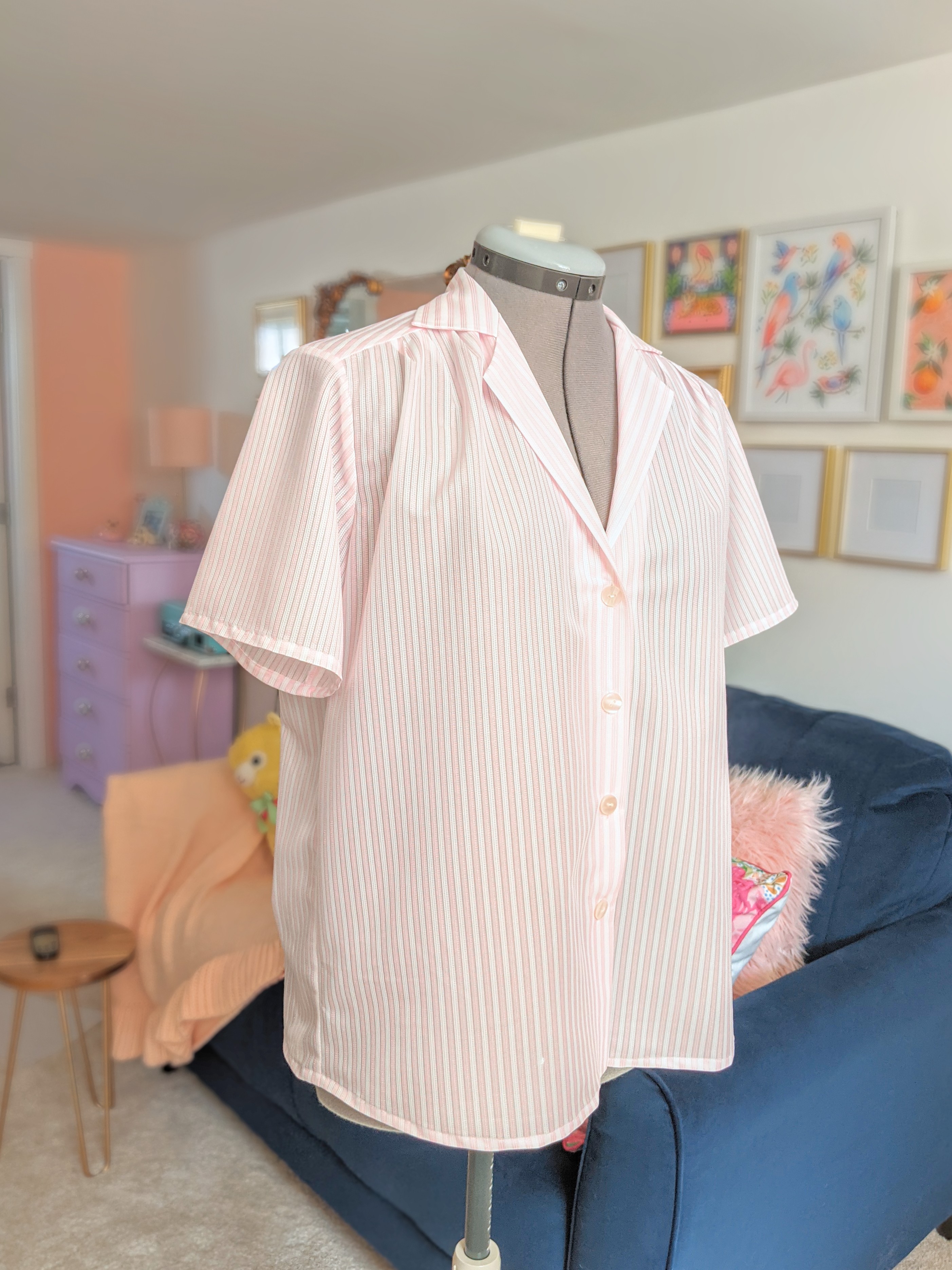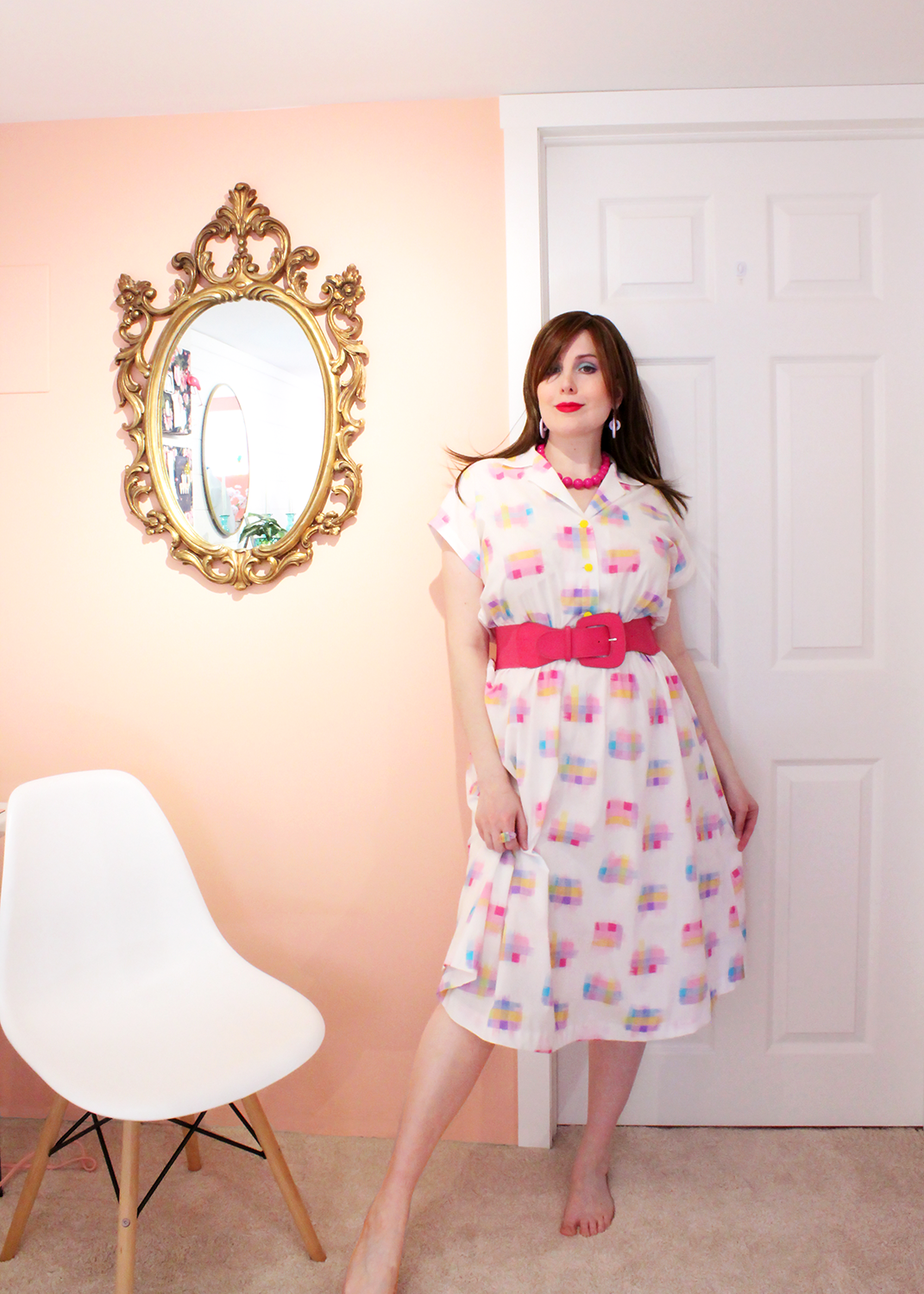1980's Blouse
It's finally spring! Soon my garden will bloom and sunny days await me...at least that's what I'm hoping for. I'm in dire need of some summer friendly separates and I know warmer weather is on the horizon. I've decided I'm going to keep running with the 80's theme for awhile (I've been bingeing 80's movies and I'm greatly anticipating my annual rewatch of Steel Magnolias for Easter). I would like to mix and match blouses and shorts for some quick wardrobe building. I don't own many 80's blouse patterns, but this Butterick 4496 has a glamorous and feminine quality to it and it's been on my "to sew" list for awhile now. I can imagine it in a luxurious silk charmeuse, if only I had some! But for this project I decided to use a sheer ribbon like material that's been in my stash for several years. It's deeply reminiscent of the 80's and looks smashing with red lipstick!
I thought this pattern was going to be a breezy sew but several things tripped me up in the process. For starters, the previous owner did an awful job cutting out the pieces. I mean large jagged edges like someone cut it out blind folded. As such, some information was lost. I couldn't tell where the notches were located, or whether some lines were curved or straight. I had to rely on my drafting knowledge to fill in the gaps. I know that my redrafted version isn't quite right, I think the yoke ended up wider than it was supposed to be, but thankfully those problems were easy to work out during the assembly of the garment. Unlike my previous endeavors, the flat pattern measurements in this garment were fairly close to my own size, with the exception of the bust. I utilized Threads Magazine Dartless Full Bust Adjustment tutorial which I'm pleased to say really works! Yes, it's true, the hemline lays straight when worn. I highly recommend this tutorial.
In the final project I decided to drop the angle of the lapel slightly to accommodate the new collar style (it was more curved before, probably in order to compliment the partial roll collar which has a roundness to it). Instead of gathering the bodice front and back into the yoke, I took the ease measurements and converted them into pleats and an open box pleat in the back. It looks much nicer. I had gathered the fabric when making the muslin, I found the effect was lacking, the pleats are more distinct and lay flat against the body.
I love the yoke on this shirt, it's lined. The collar is attached to the bodice first. Then the yoke is attached to the self facing of the lapels and pressed. Afterwards, the yoke is sandwiched with the collar and exterior yoke (right sides together) and sewn. The seam is trimmed and clipped, and the yoke turned inwards, encasing all raw edges inside the lining. It looks very neat and professional. The only drawback with the yoke is that it has to be slip stitched into place at both the shoulder and back yoke seams which is quite tedious. The results, however, are worth it!
Speaking of tedious, there is a lot of slip stitching in this pattern! The placket facing, the yoke seams, and the entire hem of the shirt is slip stitched into place. I decided against hand sewing the bodice hem and instead turned it under in a similar way to the sleeve hems. I also catch stitched the collar into place to keep it from rolling up - I learned this technique from one of my sewing text books, it worked like a charm.
One of the reasons I shy away from blouses is the buttonholes. I seem to be cursed with them. This was no exception, my buttonholes slipped under the specialty foot, so they're not perfect. It can't be helped now but next time I think I'll baste more before sewing them on my final project.
Overall I ended up with a fun, candy striped blouse that brings back fond memories of yester year, and I can't wait to pair it with my fave sunnies and my mom jeans!



.jpg)








